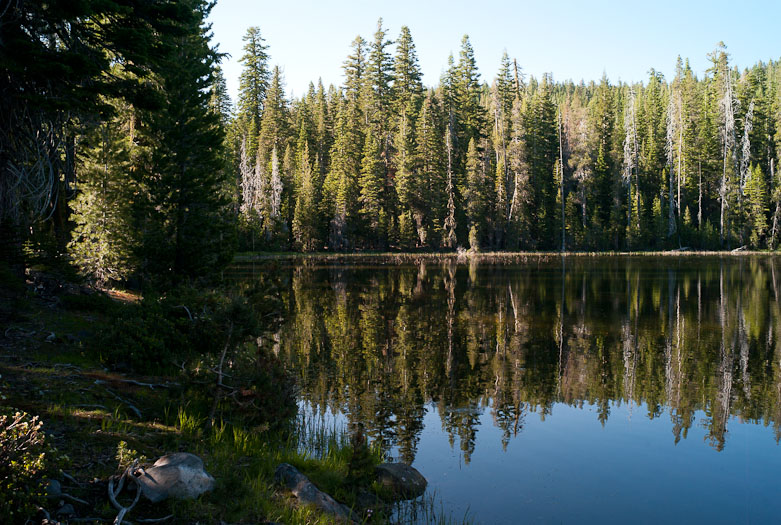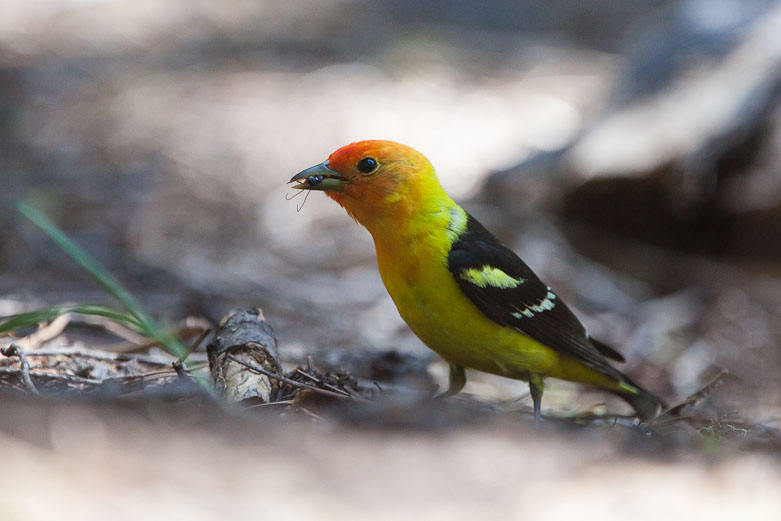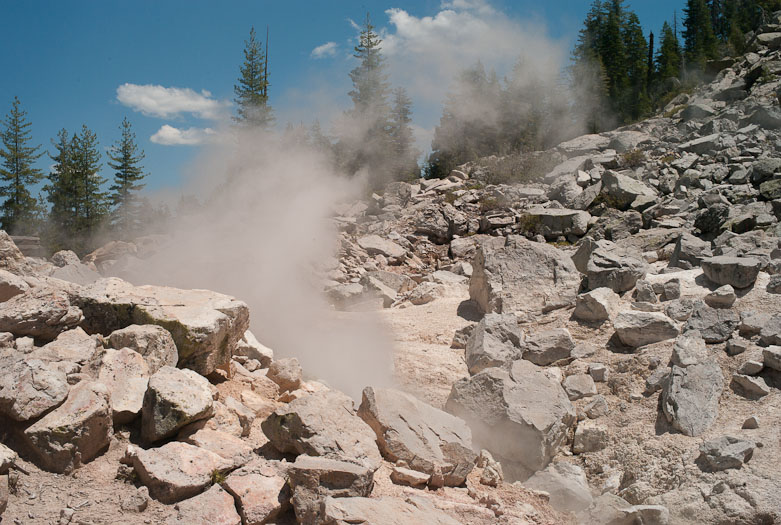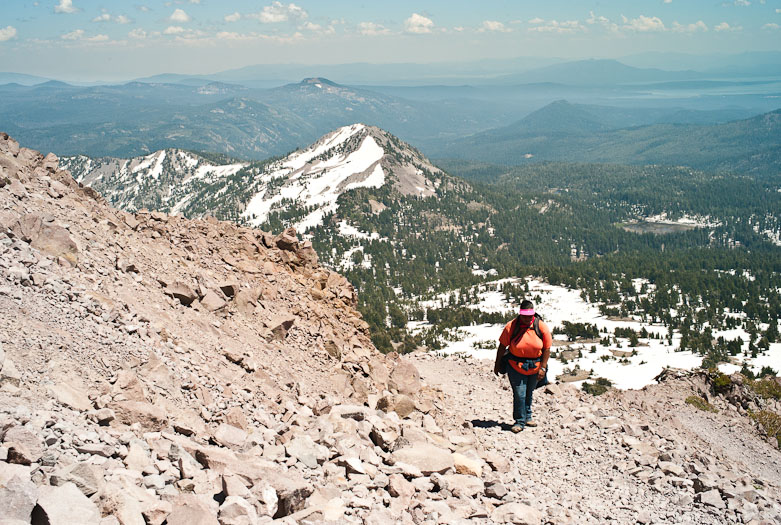Quick, name California’s most-visited national parks.
Let’s see, there’s Yosemite. Sequoia. Kings Canyon. Wait, aren’t those two the same park? No?
Death Valley. And Joshua Tree, isn’t that a new one?
Hey, there’s also Channel Islands. Redwood, isn’t that along the coast?
And Lassen. Say, where’s that?

Heart Lake, Lassen National Forest
Lassen Volcanic National Park is about five hours mostly north of San Francisco if you drive at the limit. For most Californians, it’s in that part of the state that’s ‘up there somewhere’.
According to the National Park Service, 365,639 people visited Lassen Volcanic in 2009. Yosemite got 3,737,472 visitors, over ten times as many.
Yes, Yosemite has arguably the best glacially-carved scenery anywhere, some of the best backcountry hiking, and great winter recreation on cross-country skis or snowshoes. Everybody knows about it.
And that’s the problem.
Lassen Volcanic National Park was created in 1916 following the eruption of Lassen Peak. The peak had been part of Lassen Peak National Monument, but the 1915 eruption focused the country’s attention on this volcanically-active area in the southern Cascade Mountains.
Today, most of the park is designated wilderness. That means no developed facilities, few trails, and signs and bridges only where necessary. It also means solitude for backpackers on the Pacific Crest Trail and other park trails.
Warner Valley is a hidden gem within Lassen. By driving a few miles of dirt road north of Chester, California, you get sparkling green meadows, lushly-carpeted mountains, hot springs, steaming rocks, boiling lakes, and enough sulphurous odor to make Dante happy just a short hike away. The National Park Service campground offers Douglas fir views through the top of your tent and sounds of a gently-flowing creek to lull you to sleep. There are also bear boxes for your food and toothpaste, very clean pit toilets, and friendly backcountry rangers like Chris Cruz who can suggest hikes to enjoyable destinations. You may also see Western Tanagers and other colorful wildlife.

Western Tanager, Warner Valley, Lassen National Park
I like quiet mountain scenery away from crowds and looking at thermal features, so my wife Pat and I hiked to Boiling Springs Lake and Devils Kitchen. We also walked up Flatiron Ridge on Warner’s north side for views of peaks and lakes in Lassen’s southern backcountry.

Devil’s Kitchen, Lassen Volcanic National Park
We wanted to walk to Bumpass Hell, the park’s signature geothermal area. But a trail blocked by shoulder-deep snow stopped us. We’d heard that the Lassen Peak Trail was closed for ongoing reconstruction. But we lucked out – the Lassen Park Foundation offered a Reach the Peak fundraiser at the trailhead parking lot the Saturday we wanted to hike, so the trail was open to the top.
Hiking above 10,000 feet is never easy even if you’re in shape. The panoramic mountain views and closeups of a recently-active volcano were worth the sweat and pleasantly-sore muscles. Hikers at the summit included a 76-year-old grandmother who showed all of us how it was done.

Southwest view from the Lassen Peak Trail
For our last day, we retrieved our dog from Almanor Animal Boarding and hiked the Heart Lake National Recreation Trail in Lassen National Forest, where dogs are allowed. Be prepared to get your feet wet in Digger Creek just before you burst out to views of Brokeoff Mountain reflected in this pretty lake.

Brokeoff Mountain and Heart Lake, Lassen National Forest
The only problem with hiking Lassen’s mountains is that they, like the Sierras, will probably spoil you. Local hikes start to look awfully tame by comparison.
Shot Notes –
The best camera is always the one you have with you. Since we carried enough water to avoid purifying any from creeks, and I wore a 24-hour pack of emergency supplies, I wanted to minimize the weight of camera gear. I used a lightweight Leica M8 and four lenses, shooting mostly with a Zeiss 25mm f/2.8 and Leica 35mm f/2 Summicron-ASPH. Exposure was usually what the camera recommended. Compelling pictures of scenery require either a visually-stunning subject or a human presence. You want viewers to imagine themselves in the picture.
|






If your travel starts and ends at different trailheads, assure that there is transportation to help you return to your car, or bring a second car for a bus. Another option is to base-camp in one place for the period of your trip and spend the extra days unwinding, day hiking, trekking or fishing.
Keep all of the articles coming. I enjoy reading through your issues. Cheers.